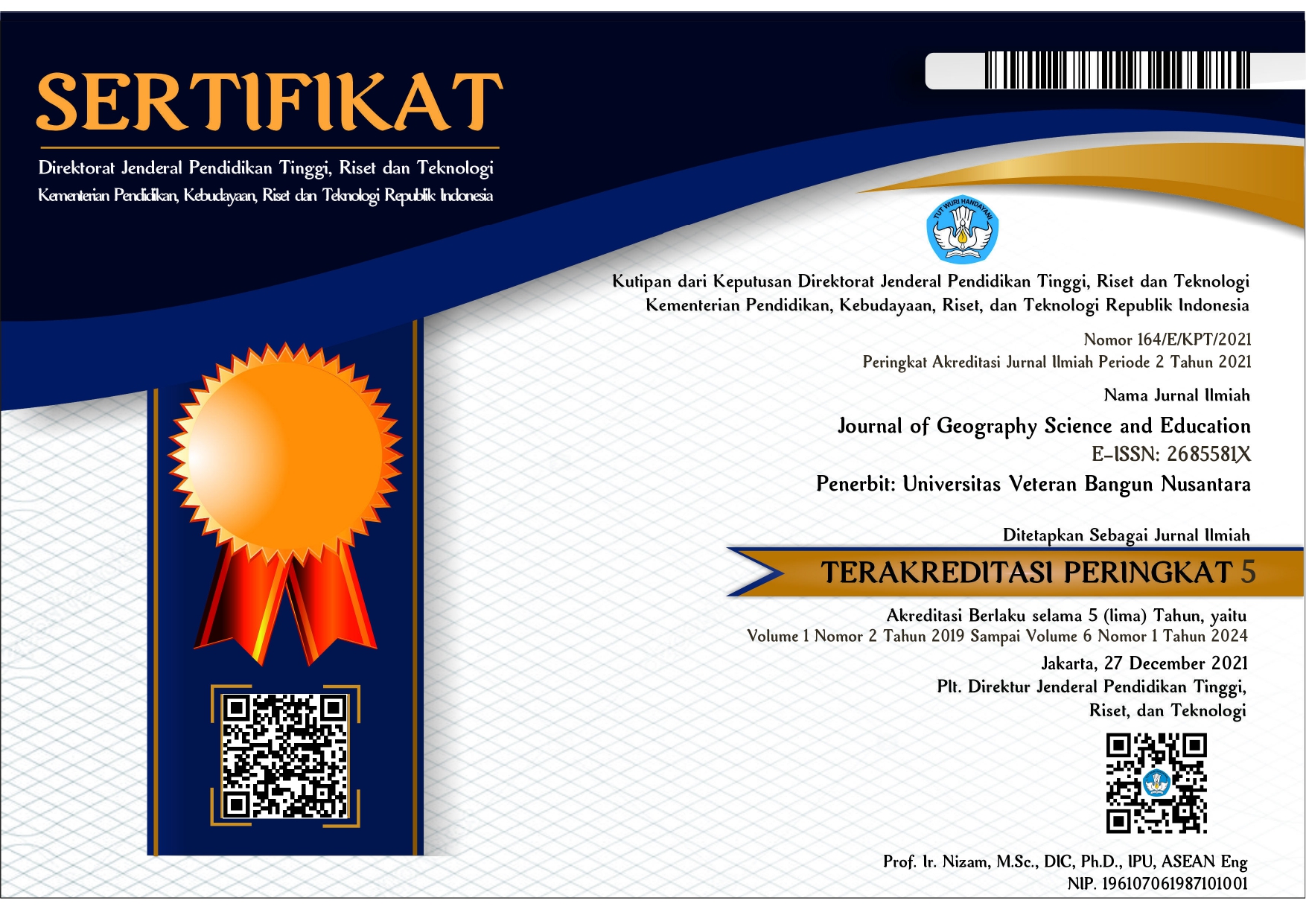Transformation of the Legality of the Marriage Culture of the Samin Sambongrejo Community, Blora Regency
DOI:
https://doi.org/10.32585/jgse.v5i1.3644Keywords:
Communitty, Samin, Legality, Marriage, BloraAbstract
Marriage is a sacred thing both in religion and culture when a woman and a man become legally husband and wife after carrying out the marriage contract and fulfilling the requirements and pillars of religious marriage, but the Samin people have a single rule, one man and one woman can be declared as legal partners when they become husband and wife when they first have intercourse, this is known as the pasuwitan tradition. This wedding tradition is part of the Samin people's wedding customs, but over time, many Samin people have legalized their marital status through the KUA. The procedure for the traditional Samin wedding is carried out with the stages of nakokke, mbalesi gunem, ngendek, nyuwito, ngeger, paseksen and tingkepan. Along with the development and influence of the awareness of the government and Indonesian citizens regarding the registration of marriages in Blimbing Sambongrejo Village, most of the Samin natives have legally registered their marriages and have made changes to the procedure for marriage through summons and registration of marriages at the KUA in accordance with the law as citizens. Indonesia is responsible for carrying out the obligations of the Samin people.Downloads
References
Andrik Purwasito, 2003, “Komunikasi Multikultural”, Muhammadiyah University Press, Surakarta.
Asiah, Siti Nur.2013. Pola Hidup Keagamaan Masyarakat Samin Di Era Modern Studi Kasus Di Desa Klopoduwur, Kecamatan Banjarejo, Blora. UIN Sunan Kalijaga Yogyakarta, 2013.
Benda HJ, Castle L. 1969. The Samin Movement. In: Bijdragen toot de Taal-, Land- en Volkenkunde 125; 2: 207-240
Beni Ahmad Saebani. 2008. Perkawinan Dalam Hukum Islam dan UndangUndang, Bandung, Pustaka Setia,
Fauzia, A., & Kahija, Y. F. L. (2019). Arti Memelihara Tradisi Pada Suku Samin Interpretative Phenomenological Analysis. Jurnal EMPATI, 8(1), 228-237.
Hutomo, Suripan Sadi. (1996). Tradisi dari Blora, Semarang: Penerbit Citra. Almamater.
Intan Fitri K F. 2016. Erkawinan Masyarakat Adat Samin Di Desa Klopoduwur, Kecamatan Banjarejo, Kabupaten Blora Setelah Berlakunya Undang-Undang Nomor 1 Tahun 1974 Tentang Perkawinan Diponegoro Law Journal Volume 5, Nomor 4, Tahun 2016.
King VT. 1973. Some observation of the Samin Movement of the North-Central Java: Sugestion for the theoretical Analisis of the dynamic of rural Unrest. In: Bijdragen tot de taal, Land-en Volkenkunde 129; 4:457-461
Letari, Indah Puji. (2013). Interaksi Sosial Komunitas Samin Dengan Masyarakat Sekitar. Jurnal Komunitas, Vol 5 (1) (2013) : 74-86
Masykur A.M, Radendra. A.M. Manifestasi Ajaran Samin Pada Kehidupan Penganutnya: Studi Kualitiatif Fenomenologi Pada Penganut Ajaran Samin Di Blora. Jurnal Empati, Oktober 2015, Volume 4(4), 118-
Mukodi dan Afid Burhanuddin. 2016. Islam Abangan dan Nasionalisme Komunitas Samin di Blora. Jurnal Walisongo, Vol. 24, No. 2, 2016.
Rosyid,M. 2010. Perkawinan Masyarakat Samin Dalam Pandangan Hukum Negara, Jurnal Analisa, Volume XVII, No.1, Januari-Juni 2010.
Santoso, Hery. (2004). Perlawanan di Simpang Jalan: Kontes Harian di Desa-desa Sekitar Hutan di Jawa, Damar : Yogyakarta.
Sartini, (2009), Mutiara Kearifan Lokal Nusantara, Kepel Press. Yogyakarta.
Setyaningrum, Dewi, dkk. 2017. Pergeseran Nilai Masyarakat Samin di Dukuh Bombong, Pati. Journal of Educational Social Studies Unnes, Vol.6, No.1, 2017.
Soekanwo A. 1968. Masyarakat Samin. Yogyakarta: Fakultas Sastra dan Kebudayaan UGM
Soerjanto Sastroatmojo. 2003. Masyarakat Samin: Siapakah Mereka?, Narasi, Yogyakarta,
Stefanus L.U. 2010. Budaya Hukum Masyarakat Samin. Bandung: PT. Alumni.
Yahya, ismail.(2009). Dentitas Dan Kearifan Lokal “Islam Samin” Di Era Global. Jurnal Millah Vol VIII No 2 Februari 2009
Victor Witter Turner. 1966. The Ritual Process: Strukture and Anti-Strukture, (New York: Cornell University Press.
Downloads
Published
How to Cite
Issue
Section
License
Authors who publish with the Journal of Geography Science and Education agree to the following terms:
- Authors retain copyright and grant the journal the right of first publication with the work simultaneously licensed under a Creative Commons Attribution License (CC BY-SA 4.0) that allows others to share the work with an acknowledgment of the work's authorship and initial publication in this journal.
- Authors are able to enter into separate, additional contractual arrangements for the non-exclusive distribution of the journal's published version of the work (e.g., post it to an institutional repository or publish it in a book), with an acknowledgment of its initial publication in this journal.
- Authors are permitted and encouraged to post their work online (e.g., in institutional repositories or on their website) prior to and during the submission process, as it can lead to productive exchanges, as well as earlier and greater citation of published work.










